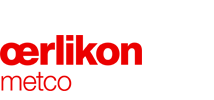Propelling Rocket Engineering with 3D Printing Powders and Coating Materials
Oerlikon
How Oerlikon’s 3D printing and coating materials are propelling rockets to the next level
It’s not rocket science, it’s rocket engineering! Engineers at LENA Space have displayed this in the best way.
With their vision to accelerate access to space and address today’s challenges in the world’s connectivity and communication, LENA Space is an enterprising company that is developing and reinventing various aspects of rocket propulsion for space launchers that can carry payloads, particularly satellites, up into earth’s orbit.
Their pioneering work is based on the gradual transition from developing scientific concepts and theory to experimentation and engineering development. As Edward Fletcher, CEO and co-founder of LENA Space, said, “it’s often better to apply the theories to a certain point, run an experiment to test, then move on incrementally from there.” Applying such a tactic instead of building a final product directly from theory gives the team a space to keep learning and optimizing their outcomes.
What made headway for this UK-based company is their synergistic efforts with Oerlikon, a global technology and engineering group, upon their partnership in 2017 to develop optimized propulsion system components using additive manufacturing (AM), which has helped propel LENA Space into better positions in terms of efficiency and economics.
LENA Space’s initial focus was centred on the development of what is known as a turbopump, upon getting awarded a National Space Technology Programme (NSTP3) grant from the UK Space Agency in early 2017. A turbopump supplies the rocket motor with liquid rocket fuels and oxidisers.
Upon further R&D work, LENA Space won another grant for exploratory ideas from the UK Space Agency and went on to develop low-cost, fast-to-market, high-performance propulsion equipment. This technology has shown potential not only in space applications, but also in other derivative applications on earth in the fields of energy, environment, and transportation. Two prospective applications currently under study are the:
Pushing boundaries from land to space
The LENA Space team has combined experience of 50+ years in rockets, land speed record cars, race cars, jetpacks, and satellites. With their rich and extraordinary engineering background, this diverse group consists of professional engineers and advisors, the majority coming from the race car industry.
Fletcher’s background comprises notable R&D engineering projects in jetpacks, hybrid airships, and supersonic cars between New Zealand and the UK. Fletcher met his co-founder and CTO, Lee Giles, while developing a rocket-powered supersonic car for a land-speed record (LSR) car project. As Giles explained, their plan to start LENA Space came from a conversation to produce and advance rocket propulsion equipment outside the USA. Giles had previously taken parts in R&D projects, mostly in motor racing with McLaren Automotive Ltd and Bloodhound SSC and in satellite technology with SSTL.

Challenges always accompany new technologies
Coming up with innovative technology brings along interesting challenges, both in engineering and finances.
At LENA Space, the engineers have encountered difficult conditions for their turbopump. As it is designed to supply the rocket motor with propellant pulled from storage tanks, it has to withstand an immense pressure of 1015 psi (7 MPa) while pumping 132 lb/s (60 kg/s) of propellant into a 28,660 lbs (13 tonnes) thrust engine. That is like working 2300 feet (700 metres) deep underwater. Furthermore, it has to endure significant temperature differences (up to 3 orders of magnitude) between the blistering hot gases and the liquid fuel, while its turbine rotates at almost 20,000 rpm, 3 times the rotation speed of a regular car engine.
To overcome such challenges, the company applies its strategic, iterative design-test-improve methodology to reach the optimal design for its products. However, developing many prototypes may result in financial challenges, particularly when addressing the turbopump, which accounts for almost half the total development cost of a rocket engine.
Overcoming challenges with Oerlikon’s cutting-edge technologies and materials
In order to contain the costs of iterative prototyping while maintaining, and even improving, the mechanical properties of the products, LENA Space used the help of Oerlikon’s advanced technologies. Oerlikon AM provided additive manufacturing (3D printing) materials and component production, while Oerlikon Metco supplied them with premium thermal barrier coatings (TBC) for the parts, and Oerlikon Balzers provided the corrosion and wear-resistant PVD outer surface coating.
In addition to pumps, turbines, impellers, and combustion chambers, one recent development of LENA Space’s projects is regenerative cooling chambers. Traditionally, cooling channels were in the form of pipes that were welded or brazed to the nozzle’s outer surface. This approach resulted in increased weight, manufacturing complexity and cost. LENA Space’s method consists of wrapping the nozzle with a cooling jacket through which a cold liquid propellant flows and helps control the temperature prior to fuel combustion and discharge.
With the help of AM, complex geometries of cooling jackets can be easily fabricated to improve process efficiency, and the integration of multiple components possible in AM helps avoid assembly steps, simplify the design process, and reduce costs. Part count reduction also gives the ability to decrease the product’s weight and minimize the probability of failure in a system, resulting in enhanced performance and reliability.
Visit Oerlikon's supplier profile page on Matmatch or explore their range of 3D printing powders and coating materials here.
Revolutionizing the industry through collaboration
The collaborative spirit between LENA Space and Oerlikon extends back to a joint project on a supersonic car between Fletcher, Giles, and the CTO of Oerlikon AM, Dan Johns. In Fletcher’s words, “Dan introduced us to the capacities of additive manufacturing, including how and when to exploit AM techniques. We’ve been really impressed with the range of skills of Oerlikon.”
Johns explained how working with LENA Space gave them the chance to unite Oerlikon AM, Oerlikon Metco, and Oerlikon Balzers in order to solve difficult technical challenges. “The three brands,” he said, “work together to accelerate innovation. We learn faster and inspire each other to think in new different ways. It is also a fantastic example of how our concept of ‘Open Collaboration’ really works to break down conventional thinking...To welcome disruptive innovation is one challenge. Achieving it is another. This collaboration shows we can accomplish both.”
This partnership promises a future with limitless potential and opportunities.

Article by Oerlikon Metco and AM
Oerlikon Metco enhances surfaces that bring benefits to customers through a uniquely broad range of surface technologies, equipment, materials, services, specialized machining services and components. The surface technologies such as Thermal Spray and Laser Cladding improve the performance and increase efficiency and reliability. Oerlikon Metco serves industries such as aviation, power generation, automotive, oil & gas, industrial and other specialized markets and operates a dynamically growing network of more than 50 sites in EMEA, Americas and Asia Pacific. Oerlikon Metco, together with Oerlikon Balzers, belongs to the Surface Solutions Segment of the Switzerland-based Oerlikon Group.

